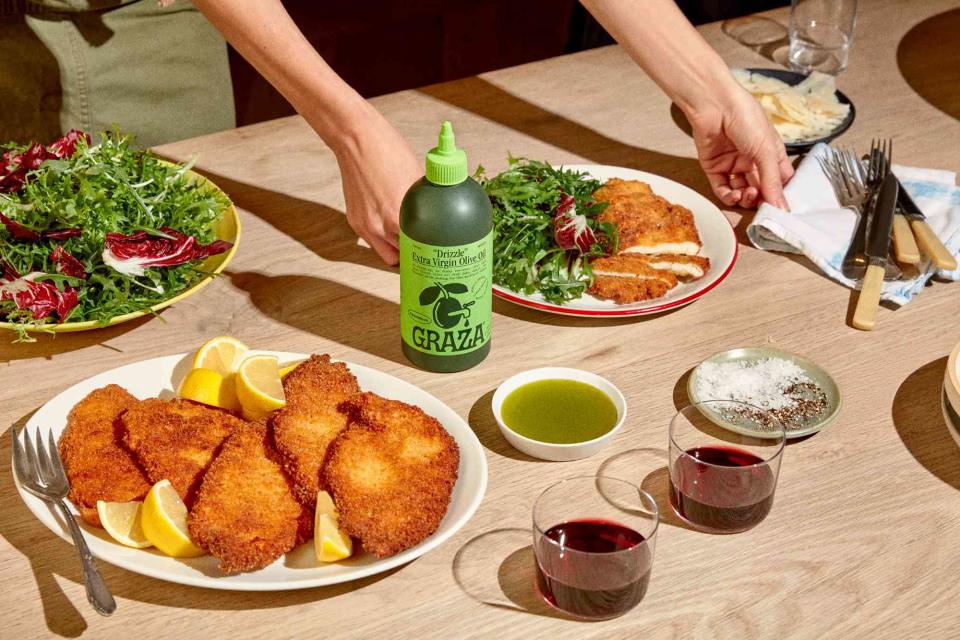If You Want Your New Food or Drink Brand to Break Through the Noise, Vibes and Alliances Mean Everything
The ecosystem surrounding that jar of jam or bag of dried beans has never mattered more.

Anisha Sisodia
It's 7 a.m. You’re treating your Instagram discover page like it’s a piece of mental chewing gum, which is to say, your fingers are moving, but you’re not really giving a ton of thought to what they’re doing. It’s times like these when every piece of partner-produced content, and every giveaway or reel needs to stand out. It's got to feel less about the thing that’s being sold, and more about the lifestyle, the ecosystem, and the ethos in which it’s being sold to you. So what does it take for a direct-to-consumer food or beverage brand selling their wares through the Internet as opposed to the shelves of a grocery or liquor store to pull away from the pack? The quality of the product is still key to long-term success, but nowadays, there’s so much more to consider if you want your wine, jam, spice, condiment, sauce, snack, candy, or whatever you're selling to stand out.
For impeccably packaged (think: a glass bottle and stopper begging to be reused, plus chic script) non-alcoholic aperitif Ghia, Instagram plays a massive role in building that ecosystem or, put more simply, “vibe.” In any given week, this means sharing a photo of a Burberry trench coat with pockets stuffed with bottles, or maybe a picture of a color-blocked, minimalist table from artist Peter Shire that doesn’t technically show Ghia at all, but is instead simply hashtagged, #feelslikeghia. “I do believe that in order to be successful as an F&B brand in 2022 you have to figure out new ways to reach your customer including through social media, pop-ups, and collaboration,” Mélanie Massarin, Ghia’s founder, tells me.
Andrew Benin, CEO and co-founder of buzzy new olive oil brand Graza (maybe you’ve come across their adorable, dark green squeeze bottles on the Internet), agrees. “Fostering a diverse brand ecosystem is not a choice, it’s an absolute requirement to have a chance in garnering attention and validation,” he says.
Collaborations are another popular tool for new brands to align themselves with other more established players in the food and beverage space, and decide whose consumer base they want to reach. For Graza, that meant teaming up with tinned fish brand Fishwife earlier this year on a limited edition campfire cod. Masarin recently collaborated with French-American designer Sophie Lou Jacobsen (you may know her from her Instagram-famous squiggle-handled teapots and curvaceous cups) to release two sets of stemless Martini glasses. The permutations are seemingly endless, and fascinating to follow — sauce and starter company Omsom collaborated with jigsaw puzzle maker Piecework on a limited edition hot pot puzzle, while millennial-friendly cookware company Great Jones released an electric kettle (in Great Jones’ signature dark green hue, Broccoli) made in conjunction with the coffee lovers at Fellow.
While limited-edition collaborations certainly help fledgeling companies build identity through association with brands their desired customers already follow and shop from, the rise of in-person events also provides opportunities to align with values and causes that they want people to see as part of their ecosystem. This past weekend, Ghia hosted a bake sale in Los Angeles, and donated all profits to Feed The Streets, a mutual aid organization that collects everything from hygiene products to food supplies for underserved communities. In NYC, Sanzo, a seltzer brand that was one of our 2022 Game Changers joined brands like Omsom and Ghia by adding their products to a tote bag given to donors for a bake sale to protect reproductive rights in light of the federal overturning of Roe v. Wade. In an age when people really notice and care how brands spend their money, aligning with causes like these is a critical way for brands to influence how folks perceive them — and, of course, give back to worthy causes.
“It’s true that the days of cheap growth capital are totally gone,” Benin admits, referring to the shift in readily available funds companies like his once had to grow at rapid speed. Luckily, the grassroots approach is working — Graza made it into Whole Foods stores throughout the Southern Pacific and Northeast this spring, while Ghia is now on restaurant menus from Los Angeles to Chicago to New York City.

